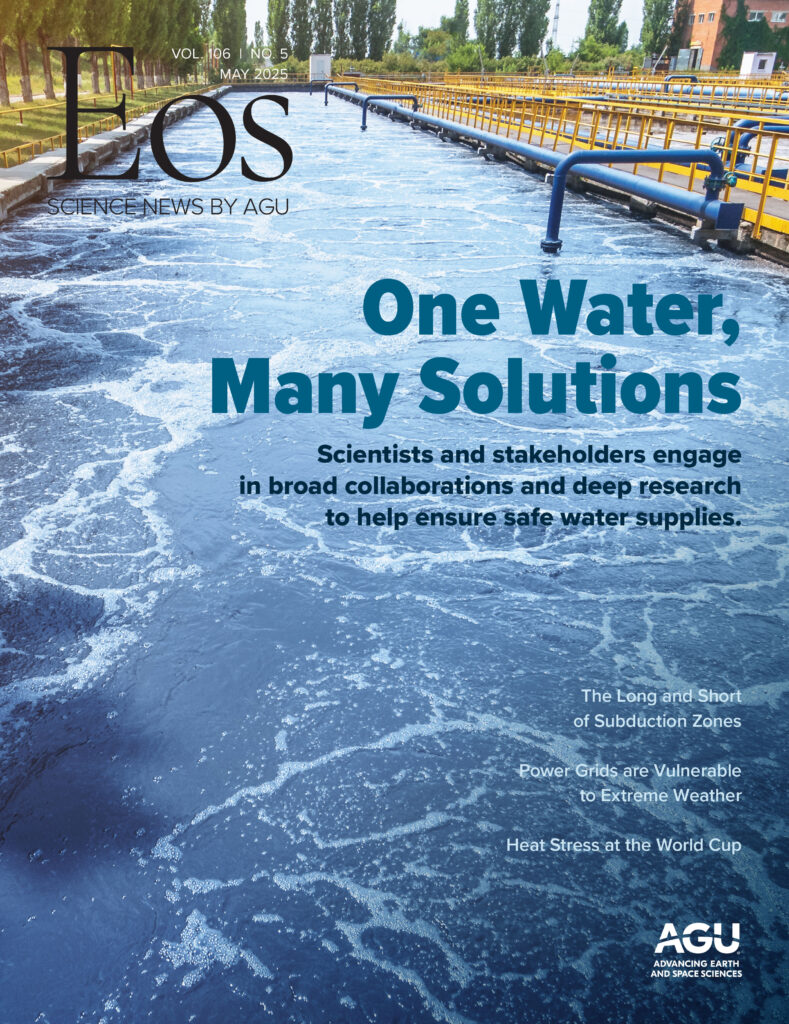The U.S. EPA regulates levels of more than 90 contaminants in public drinking water, but thousands more potentially harmful chemicals remain without health standards at either the federal or state level.
Monitoring data show that more than 97 million people in the United States have been served by public water systems that contained detectable levels of at least one unregulated industrial contaminant, according to a new study published in Environmental Health Perspectives. And drinking water in counties with higher proportions of Hispanic residents was more likely to have these contaminants.
“This study affirms what environmental justice advocates have been highlighting for decades: Communities of color often have to drink dirtier water,” said Lara Cushing, an environmental health scientist at University of California, Los Angeles who was not involved with the study.
Unregulated but Not Absent
“The number of regulated contaminants in federal law is low relative to the number of potential contaminants that can get into drinking water sources,” said Aaron Maruzzo, an environmental health scientist at the Silent Spring Institute and lead author of the study.
To get a sense of the public’s exposure, EPA collates data on a selection of unregulated contaminants in drinking water every 5 years. During each data collection cycle, contaminants are selected on the basis of criteria including whether they could occur in drinking water, whether they were monitored in prior cycles, and their potential health effects. Data are collected by all public water systems serving more than 10,000 people, as well as by many smaller systems.
Maruzzo and his colleagues analyzed EPA’s monitoring data from between 2013 and 2015 to check the levels of four unregulated contaminants in drinking water supplied by more than 4,800 public water systems.
The researchers analyzed industrial contaminants rather than other chemicals such as disinfection by-products or agricultural chemicals, which have been the focus of other monitoring cycles. They also limited their list to contaminants that were prevalent enough to allow stringent statistical analyses.
Ultimately, they focused on per- and polyfluoroalkyl substances (PFAS), which are several chemically similar compounds used in a variety of products, including firefighting foam and food packaging; the industrial solvents 1,4-dioxane and 1,1-dichloroethane; and chlorodifluoromethane (HCFC-22), used as a refrigerant and propellant.
More than a quarter of the public water systems in the dataset—collectively serving more than 97 million people—detected at least one of the four contaminants in the drinking water they supplied. The most commonly detected contaminant was 1,4-dioxane, which can cause eye and nose irritation at low levels of exposure and may lead to serious kidney and liver issues when present at high levels.
Not Everyone’s Drinking Water Is the Same
The study also found that counties with higher proportions of Hispanic and non-Hispanic Black residents were more likely to get their drinking water from public water systems that detected unregulated industrial contaminants. This association persisted across socioeconomic status indicators such as income, homeownership, and proportion of residents in poverty. In addition, this association could not be explained by how close the public water systems were to sources of the industrial contaminants.
“Unfortunately, we have known from stories from communities of color that environmental justice issues and drinking water quality exist in many places,” Maruzzo said. “[Those stories] were completely supported by the data and our analyses.”
“This study highlights the urgency of targeted investments and creative ways to help drinking water suppliers, particularly in disadvantaged communities,” Cushing said. Minimizing levels of these emerging contaminants in drinking water is vital because exposure to some of the contaminants analyzed in this study can have severe health effects. PFAS, for example, have been associated with increased incidence of various cancers. Widespread concerns about their dangers led EPA to announce the first set of legally enforceable levels for six PFAS compounds in April 2024.
“The problem may actually be worse than we think.”
“The problem may actually be worse than we think,” Cushing said. The nature of the data collected by EPA and analyzed in this study meant that some demographic nuances may have been missed, and the inequalities found in this study might actually be more pronounced.
“Looking at the county level can average out some demographic data,” said Laurel Schaider, an environmental chemist at the Silent Spring Institute and a coauthor of the new study. “For instance, we know from prior studies in the California Central Valley, when you look at smaller geographical scales, there can be quite large differences in the demographics of communities that are more impacted by water contamination.” Schaider said she anticipated that more recent datasets from EPA will allow researchers to home in on social and demographic inequalities on a much finer scale.
Another issue is that smaller public water systems and private wells may not be required to measure as many potential contaminants as larger systems. “These smaller or private systems may actually be more vulnerable to poorer water quality and have less capacity to deal with contaminants,” Cushing said. “No data does not mean no problems.”
Next steps should include doing more to protect water sources from being contaminated in the first place, according to Maruzzo. “Also, there should be more support for underresourced communities with water quality issues, so that systems in those communities can treat and test for unregulated contaminants and ensure that they are providing clean drinking water.”
—Adityarup Chakravorty ([email protected]), Science Writer


